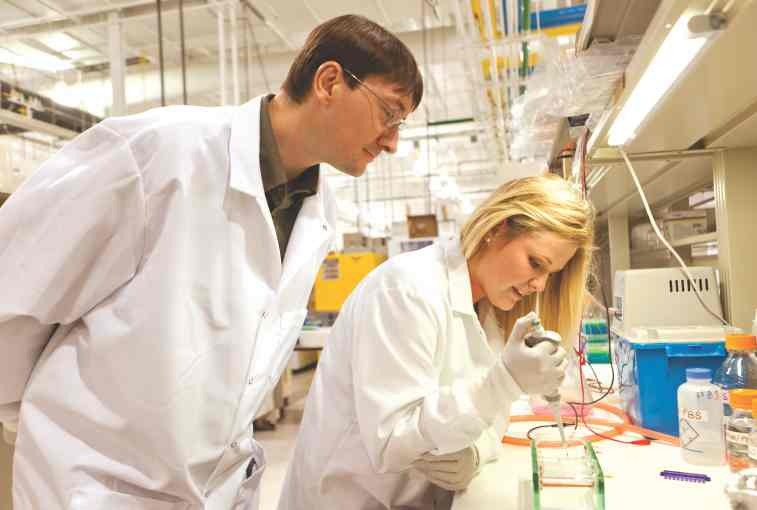The National Institutes of Health (NIH) awarded a $2 million grant to Sanford Research’s Kyle Roux for work that could help people suffering from rare disease such as muscular dystrophy or premature aging.
Roux, a cell biologist, is senior director of biomedical sciences and an associate scientist on the enabling technologies team at Sanford Research. He’s the first person from that Sanford Health initiative and the first scientist from South Dakota or North Dakota to receive a new grant called an R35 that supports research programs instead of specific projects from the NIH’s National Institute of General Medical Sciences (NIGMS).
That division hopes to increase the understanding of biological processes that lead to rare disease diagnosis, treatment and prevention.
An earlier grant from the NIGMS gave Roux the resources to create an enabling technology called BioID that is used to study protein function, information which can help uncover mechanisms of disease. NIGMS is interested in all aspects of health and disease, not just rare disease. And BioID can be applied to all kinds of studies, ranging from understanding normal biology to mechanisms of common or rare diseases.
“Hundreds, maybe even thousands, of scientists have been using this method I developed and are applying it to new ways that I didn’t envision. It’s something that we created and put it out there and other groups are able to build on it. That’s the way science works,” he said. “I wouldn’t have gotten the new grant had I not had the success from the prior grant.”
His new NIH grant, good for five years, continues the effort.
Protein locksmith
Roux isn’t directly looking for a cure for rare disease. Rather, he studies the structure and function of a component of cells called the nuclear envelope. It surrounds the nucleus, which stores all of a person’s genetic information.
Mutations in the genes that make up this nuclear envelope cause rare disease. Roux and his team are working to understand the underlying mechanism those mutations use to cause the disease. Understanding that could lead to targeted therapies that could actually combat the disease.
One of the things he wants to understand is how proteins function in the cell, which affects how they interact with each other. Roux’s BioID technology allows that.
“This grant, in large part, is intended to support my research to further develop and apply that method, both to the questions that I’m interested in but also to facilitate investigators around the world. This has broad applications to almost every disease,” Roux said.
Unlike some grants that are narrow in scope, the NIGMS grant gives Roux flexibility to study interesting leads that fall outside of BioID but still relate to the nuclear envelope. Such discoveries “are pushing us in new directions to understand what the nuclear envelope does and its relation to health and disease,” he said.
That understanding is what can unlock other advances.
“If researchers find out mechanisms with these, sometimes they can open up doors to more common diseases or conditions. If you find a mechanism of one, you can potentially identify new ways to combat the effects of aging or treat cancer, for example,” Roux said.
…
